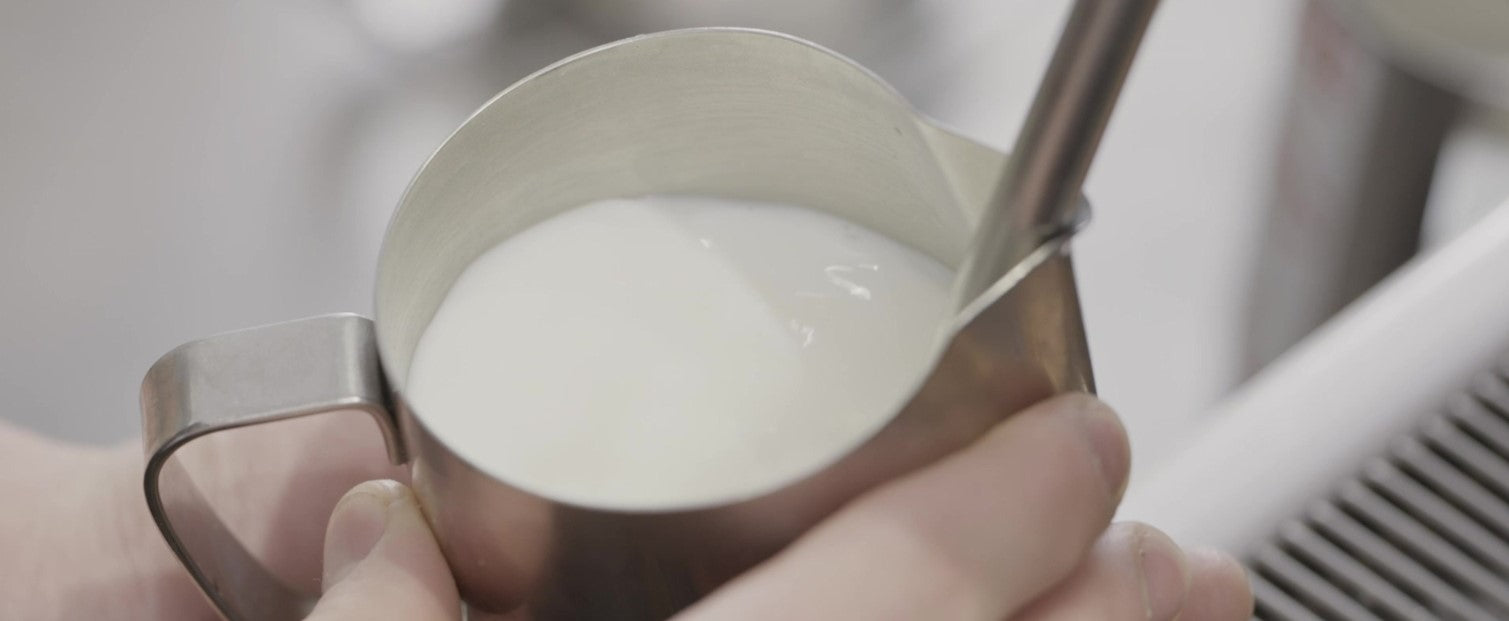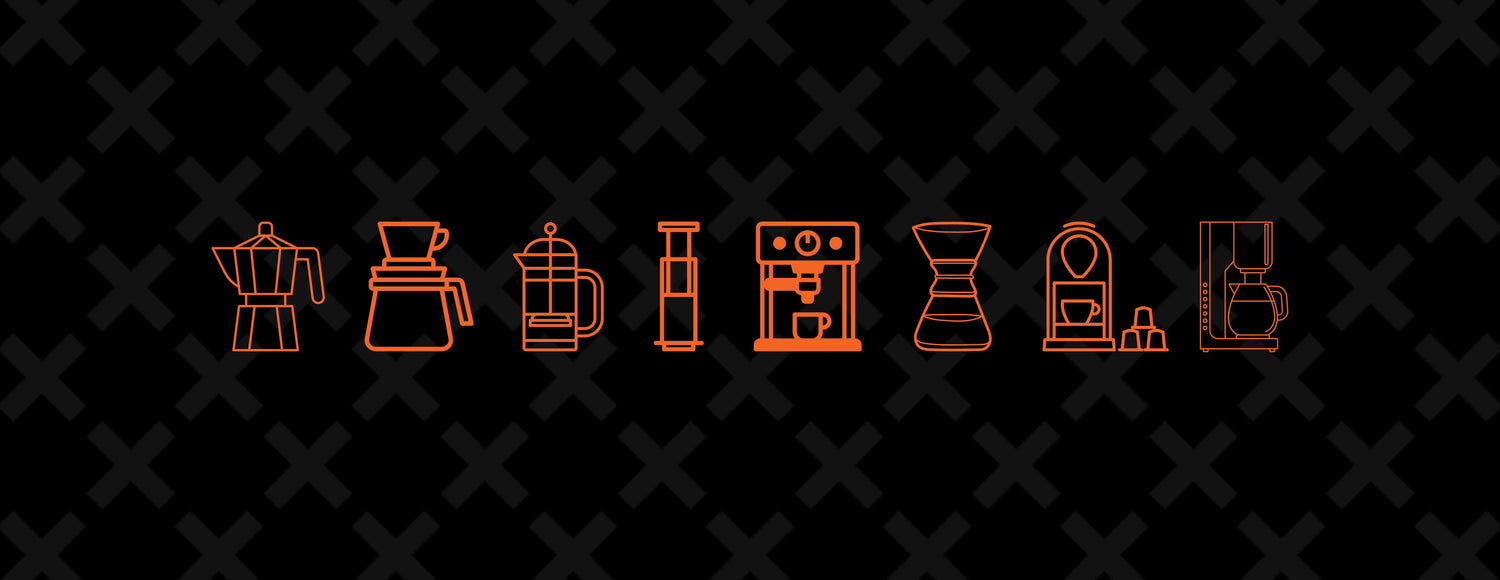Microfoam
What is microfoam?
Microfoam in coffee refers to finely textured milk created by steaming milk using a steam wand on an espresso machine. A skilled barista can make microfoam when steaming milk by incorporating air into it, creating a velvety, creamy texture with tiny, uniform bubbles. The goal is to produce a smooth, glossy, and luxurious foam that enhances the taste, texture, and visual appeal of a milky coffee. It is crucial in crafting speciality coffee beverages like lattes, cappuccinos, and flat whites. When done well, it can be used to create intricate designs on the top of a coffee, known as latte art.
How is microfoam created?
Ok, it's time to get a bit nerdy. The creation of microfoam involves a scientific interplay between milk proteins, heat and steam pressure. When milk is steamed using an espresso machine's steam wand, the high-pressure steam essentially blows tiny air bubbles into the milk. This process involves the denaturing of milk proteins, specifically whey and casein proteins, due to the heat. The denatured proteins unfold and entrap the air bubbles within a matrix, aided by the steam's pressure.
Casein proteins play a crucial role in creating a stable foam by forming a network that keeps the air bubbles intact and prevents them from merging, which results in a smooth and consistent texture. The ideal combination of heat, pressure, and protein interactions during the steaming process is essential in achieving the desired microfoam texture that enhances the taste and presentation of coffee-based beverages.
Basically, the steam wand blows bubbles into the milk. As it heats up and spins the milk around, these bubbles are smashed down to a size so small they're impossible to see. This creates the lovely, glossy effect of microfoam.
What kind of milk works best for microfoam?
The process of creating microfoam varies depending on the milk used due to differences in protein, fat, and sugar content. These components play significant roles in determining the texture and quality of the foam.
Protein Content:
Milk contains two main types of proteins: whey and casein. Casein proteins stabilise the foam, creating a lasting and creamy texture. Different milk types (such as whole milk, skimmed milk, or plant-based alternatives like oat or soy milk) have varying protein compositions, affecting their ability to create and maintain microfoam. For instance, cow's milk generally contains a higher ratio of casein to whey proteins than some plant-based alternatives, resulting in more stable foam.
Fat Content:
The fat content in milk contributes to the richness and creaminess of the foam. Milk with higher fat content, like whole milk, tends to produce thicker and more velvety microfoam due to the presence of milk fat globules, which add to the texture and mouthfeel of the foam.
Sugar Content:
The sugar content, mainly lactose in milk, can affect the caramelisation process during steaming. Sugars contribute to the Maillard reaction, which adds depth to the flavour profile of the foam. Different types of milk, especially those with added sugars or sweeteners, might produce foam with slightly altered taste and browning properties.
Plant-Based Alternatives:
Non-dairy alternatives, such as almond, soy, oat, coconut milk, etc, have distinct compositions compared to dairy milk. For instance, almond milk tends to have lower protein content, affecting its ability to create stable microfoam. Some plant-based milks might also contain additives or stabilisers that affect their foaming properties. But some brands offer a barista blend designed to behave as close to whole milk as possible. And the Minor Figures oat milk we offer at FiXX is one of these blends.
These components among different types of milk lead to varying foam textures, stability, and flavour profiles. And if you've got a preference, it's because you've got a choice. As a trained barista, figuring out how different milks act during steaming can be tricky. Even the same brand of whole milk can behave differently from day to day because it has come from a different field of cows. Knowing how and when to adjust your steaming techniques requires barista training. And if you're a wholesale customer of FiXX coffee in Ireland, we are happy to offer ongoing free barista training when and where needed.
What tools and equipment are needed for creating microfoam?
Creating microfoam typically requires specific tools and equipment commonly found in coffee shops or the kitchens of espresso fanatics. Here are the essential items:
- Espresso Machine: It's not so much the machine you need here, more so the steam wand attached to it. This wand emits steam under pressure, allowing the creation of microfoam by steaming milk. Commercial Espresso machines are designed to do this continually. In contrast, domestic machines may need a brake between steaming to build up the required pressure again. But, if you don't own an Espresso machine, you can use a few things to make microfoam (kind of). In fact, you can use a French Press if you have one at home. You can find out how to do it in this video here. Other gadgets do exist. But if you're reading this, I'd hazard a guess you already have a French Press in your house.
- Steam Pitcher: These are just the metal jugs you'll see in a cafe. They are great for pouring microfoam to create latte art and hold heat well. However, any jug could work, theoretically. It's not like steam pitchers make the milk taste better!
- Thermometer: This isn't something I recommend in a professional setting. A trained barista should be able to tell when milk is at optimal temperature by touch, sound and smell alone. But if you're just a home enthusiast, then yes, these can be very handy because there absolutely is an optimal temperature for milk. Once milk goes over 70°C (158°F), the proteins begin to break down, affecting the milk's taste. The natural sugars will also break down, affecting the milk's overall sweetness. But, if you're one of those folks who like an extra hot latte/cappuccino/whatever, you're probably not too fussed about these facts. So, on you go.
How to ideally steam milk for microfoam
I'm gonna guess you're probably tired of reading if you've made it this far. And thank you if you have. And so, I suggest this video by James Hoffmann for milk steaming techniques.





